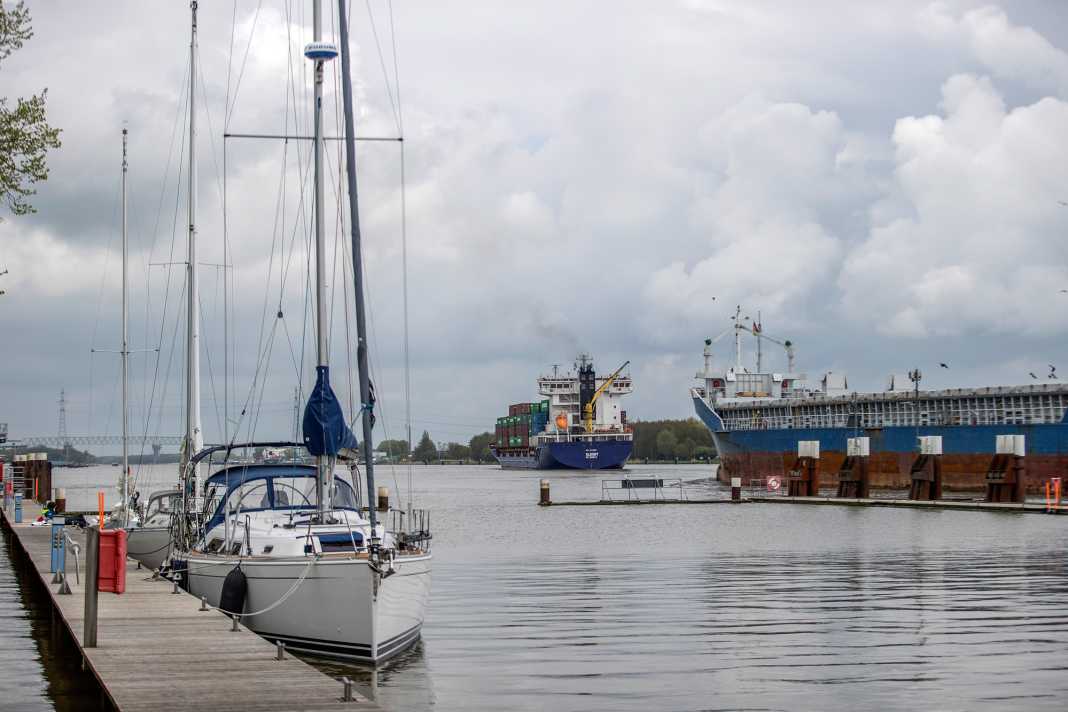





Irrespective of the official categories, waterways today can also be roughly categorised according to whether they are still used by large-scale shipping and are developed accordingly, or whether recreational skippers are largely among themselves there - apart from the occasional White Fleet passenger ship or the official vessel of the supervisory authorities.
The major, internationally networked rivers and canals, such as the Rhine and Elbe river basins or the Main-Danube and Mittelland Canal axes with their connections, are still among the busiest transport arteries. The locks there are correspondingly large, with pleasure craft playing only a minor role.
On the other hand, there are those areas that are firmly in the hands of recreational boating. The best example of this is Europe's largest contiguous water sports region: the Mecklenburg and Märkisch waters. Large stretches of this "blue paradise" can now be navigated with a charter licence and have become a holiday destination not only for locals and touring skippers, but also for countless charter crews, who can set sail there under special conditions even without a boating licence.
In the high season, it can get crowded not only in the harbours, but also in front of and inside the locks. Waiting times of two hours or more must therefore be taken into account. Incidentally, the term "sports boat lock", which appears more and more frequently in the media, is only correct if the lock is actually only available to pleasure craft.
On the Moselle, for example, there are special boat locks at the barrages that must be used by boats up to 18 metres in length - provided they work. The situation is similar on tributaries such as the Upper Spree, where even the newly built Kossenblatt lock only has a usable length of around 15 metres and is intended exclusively for water tourism.
The operating times
What to look out for and what you need to know when you lock alone or with others will now be explained step by step. You should plan your trip long before you enter the first lock gate. Before the journey begins, you should find out exactly when the locks are open and if there are any closures. Nothing is more annoying than unexpectedly finding yourself in front of a locked gate while on holiday.
Fixed closures - e.g. for maintenance intervals - are published on the Internet on the website of the Federal Waterways and Shipping Administration (www.elwis.de). Harbour masters, water police and water and shipping authorities can usually also provide information. The operating times, on the other hand, can be found in the nautical cruising literature.
The registration
If you are travelling on a major shipping route such as the Rhine, you must report to the next lock by mobile phone or VHF radio at least a quarter of an hour before reaching the lock harbour. Telephone numbers and radio channels can be found in nautical literature, and the channels are also indicated on blue signs on the banks. The lock staff will then tell you how to proceed and whether you can enter immediately behind a commercial vessel or whether you first have to wait for oncoming traffic.
In pleasure craft areas, however, it is not usually necessary to register in advance at the lock. However, if this is the case, there will be information in sailing literature or on signs. Such notices may also be located directly at the leisure craft maintenance centre, for example if the lock is monitored remotely and only operated as required. Intercom systems are available for this purpose, and the following instructions are then often given over loudspeakers.
If you are approaching a lock within sight and the signal shows red, you should always moor at the designated leisure boat waiting area. Firstly, you can never know exactly when it will continue, and secondly, a boat that circles impatiently can quickly become an obstacle to traffic.
At the waiting area
The waiting area can be a free-standing row of dolphins in the water, a fixed jetty or just a paved strip of bank. In front of large locks, there are either smooth walls or sheet piling with bollards. With the latter, care must be taken to ensure that the fenders do not slip into the gaps and cause the yacht to hit hard when passing commercial vessels create swell.
Fixed rule: If other boats are further ahead, they will not be overtaken. Pushing ahead is absolutely taboo in every phase of the lock (although there is nothing to stop you from letting a small boat ahead that may still fit into the chamber).
Of course, a commercial vessel always has right of way, no matter how big (or small) it is; even if pleasure craft were "there first". An hour or two can quickly pass in front of large shipping locks when one cargo vessel after another fills the chamber to capacity.
If the queue is longer, the boats are now moved further forwards with each lock passage until it is their turn. The time can also be used to deploy fenders on both sides and prepare the lines for the lock. In the case of self-service locks, the request counter is also located here.
Mooring is prohibited at the waiting areas. The only exception: If you reach a lock in a recreational boating area after hours, you can spend the night at the waiting area. This is also not actually permitted, but is tolerated - if the lines are cast off in time for the first lockage the next morning.

